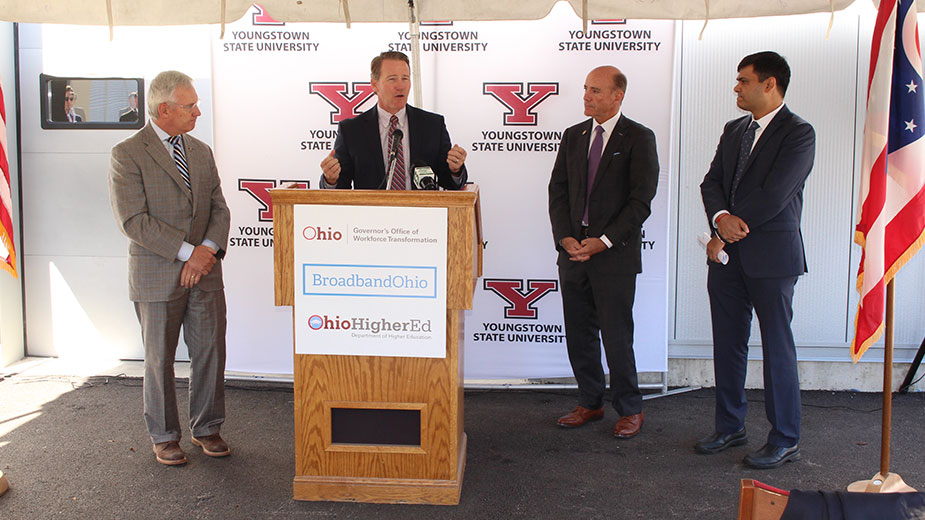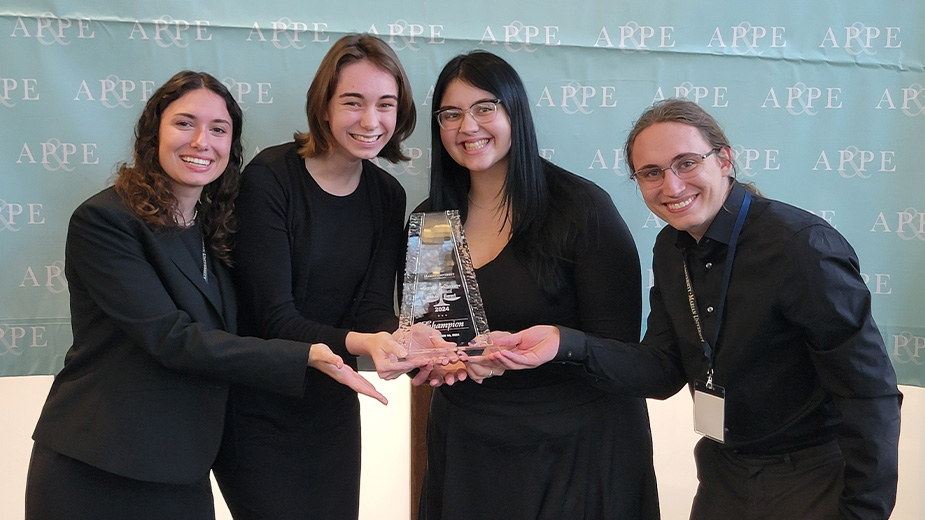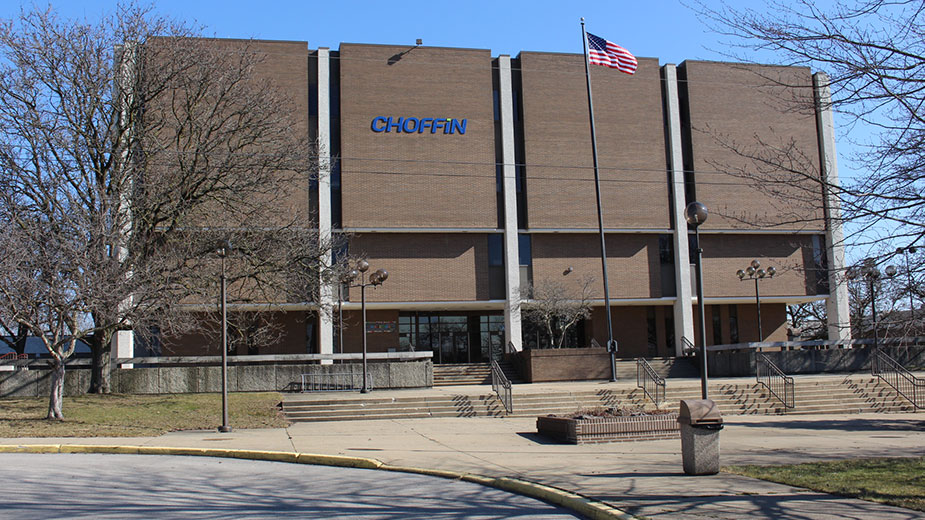Husted, YSU Announce Broadband Initiatives at Excellence Center
YOUNGSTOWN, Ohio — The process of implementing 5G wireless technology is expected to create 108,000 jobs between 2020 and 2030, and new initiatives that Lt. Gov. Jon Husted announced Monday aim to help fill those positions.
At Youngstown State University’s Excellence Training Center in Kohli Hall, Husted launched the Broadband and 5G Sector Partnership Grant application and 5G readiness programs at YSU and Ashland University.
“We know if you don’t have access to high-speed internet, you can’t participate in the modern economy, education or health care system,” said Husted, who is director of the Governor’s Office of Workforce Transformation.
“If we want to build out all of this 5G technology or to build broadband across the state, you need a workforce,” he said. “Every industry is struggling, but just think about this: This is a workforce that has not yet been trained.”
Under the sector partnership grant programs, institutions of higher learning will identify a not-for-profit telecommunications industry partner to provide industry expertise and guidance in designing and distributing curriculum and training programs that will supply the industry with a skilled workforce, he said.
Through the 5G readiness program, YSU and Ashland will each receive $180,000 to provide 25 scholarships for a program that will provide students with an understanding of the core fundamentals of 5G, Husted said. The program will be offered at both institutions in the spring semester 2022.
One of YSU’s goals is to have multiple opportunities for students to enhance their degrees, YSU President Jim Tressel said. “Their upward mobility in the future will be extraordinary.”
“This is just another wonderful industry offering that’s coming to the Youngstown-Mahoning region, and we’re really excited,” said Jennifer Oddo, executive director of YSUs Division of Workforce Education and Innovation.
“The impact that 5G broadband is going to have on our community, on our region and for the state of Ohio is just extraordinary,” she said.
“We know that Ohio is a stronger state if we allow 5G technology to truly take hold, and that promises to become a reality,” Ashland University President Carlos Campo said.
Campo outlined the various uses of expanded 5G technology, from a farmer who can check on the status of the fuel efficiency of a tractor or its location using a smartphone, to students at YSU and Ashland potentially collaborating on a mural in real time using immersive technology.
The initiative also will improve the capabilities of a second-chance program that Ashland offers in partnership with the federal government to 4,000 inmates in 13 states, including 800 in Ohio, Campo said.
“We will have 5G technology that will be much more stable [than Wi-Fi] and allow those students who are now getting a quality education behind bars to transition even more effectively,” he said.
Husted emphasized the 80-hour course, which will cover topics including cellular communications theories and fiber for wireless Wi-Fi integration, isn’t just for one specific degree or major. “There are many potential career paths for the students to take,” he said.
The lieutenant governor pointed to the difference the credentials can make in starting pay. An engineering student graduating without the training could start as a drive test data engineer earning about $55,000 annually. The same student completing the 5G-ready program could skip the entry-level position and go straight to being a radio frequency engineer making $10,000 more.
The initiatives announced Monday will help bridge the digital divide so more people will have internet access, Oddo said. Even more exciting are the training opportunities that will provide entry points into the industry for people not pursuing a degree, as well as providing “an incredible opportunity” for university students or those who have degrees in information technology related fields “to really help build on those stackable skills that are going to be so in demand for the broadband industry.”
Husted said sector partnerships help to align industry and education to ensure that the educational institutions have the curriculum that meets the industry standard, “so that the students that go through that will be prepared, they know they’ll be prepared for the jobs that are available.” In many cases, the students start working even before they graduate, but then “certainly have a career when they complete [school,]” Husted said.
“Our employers are struggling to find skilled workforce, and this is going to help us,” said Rikin Thakker, chief technology officer for the Wireless Infrastructure Association, which will provide 5G training. He praised YSU and Ashland as examples for other institutions.
“We need enterprising leaders like you. Not all other universities are actually willing to do this,” he said. “You are open about partnering with industry and making sure that whatever is working for the employees actually needs to be taught in the classroom.”
The grant application for the sector partnership opens Oct. 25 and closes Dec. 17, with the award to be announced in January.
YSU is now recruiting for the first spring semester cohort. The key will be finding those 25 students who want to add to what they are already doing, Tressel said. The progress will begin with internal marketing on campus and then branch out to local career and technical centers, as well as reaching out to the 1.5 million people in Ohio who stopped before completing a college degree.
“This isn’t a job that your grandparents or parents ever did. This is something new. So we need to expose our students to it. That, to me will be the biggest part of our opportunity,” he said.
Pictured at top: Attending the announcement were YSU President Jim Tressel, Lt. Gov. Jon Husted, Ashland University President Carlos Campo and Rikin Thakker, chief technology officer for the Wireless Infrastructure Association.
Copyright 2024 The Business Journal, Youngstown, Ohio.



